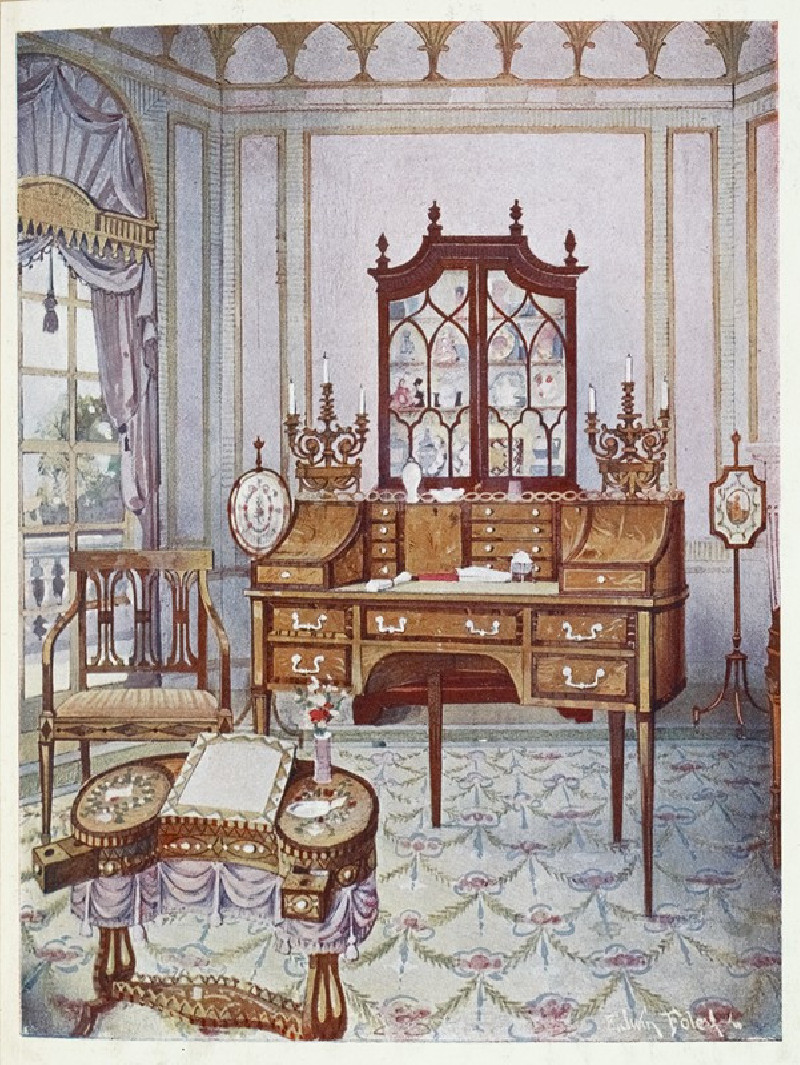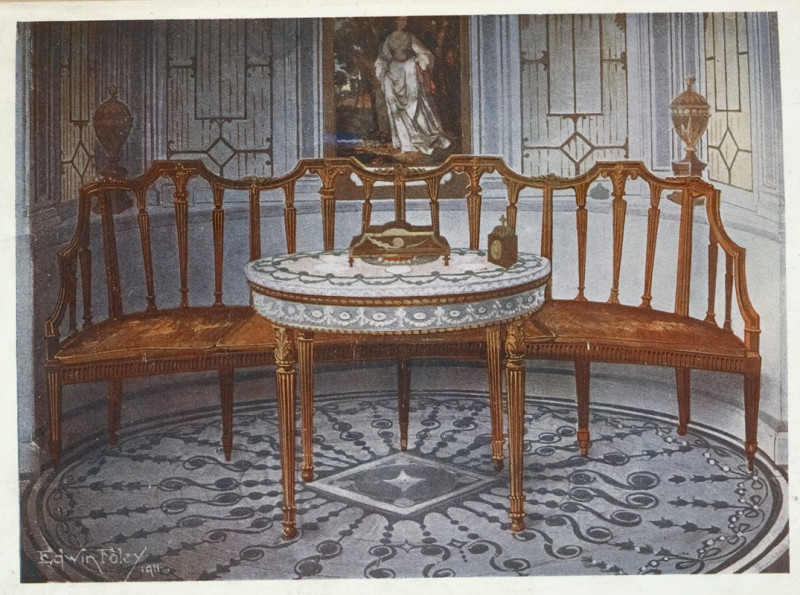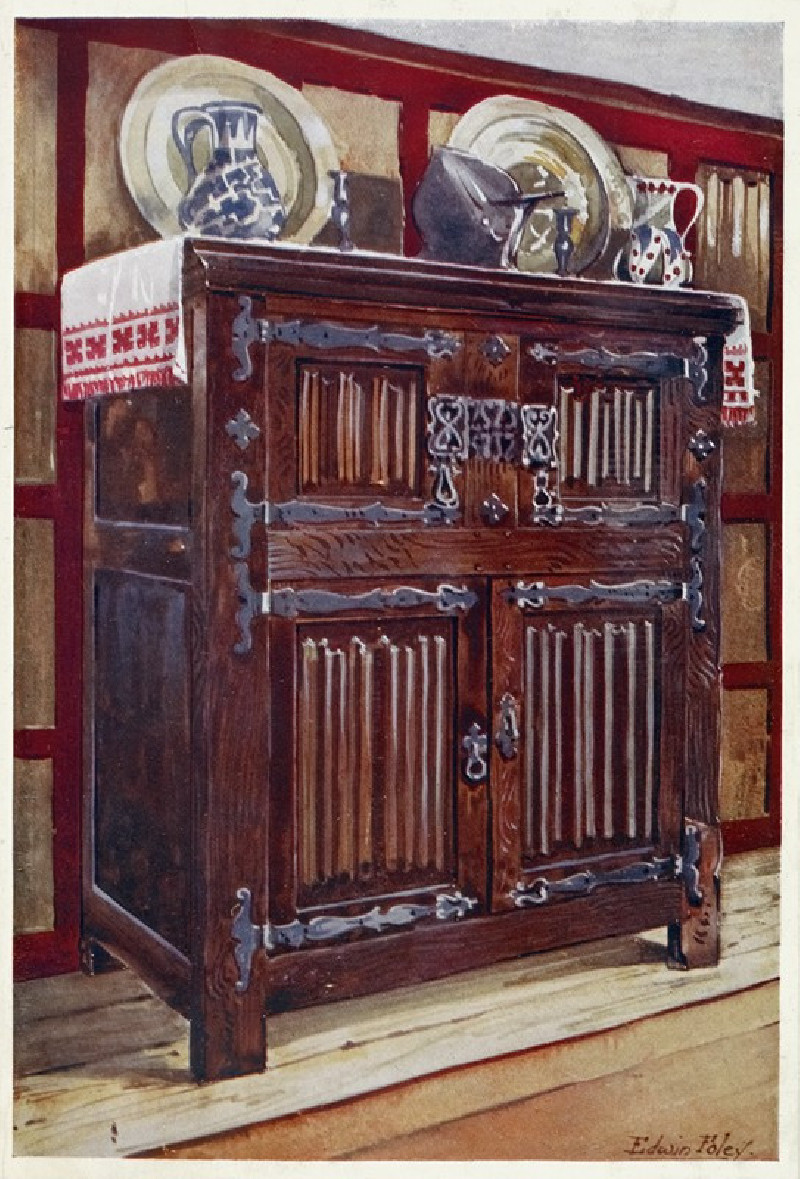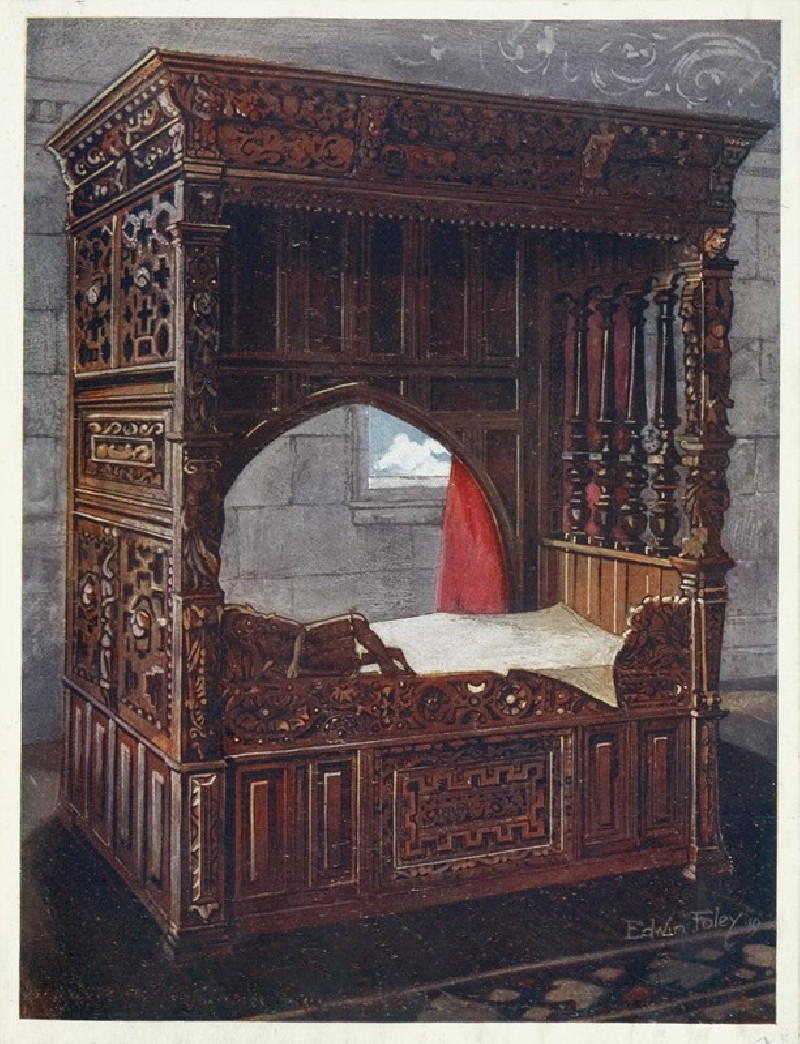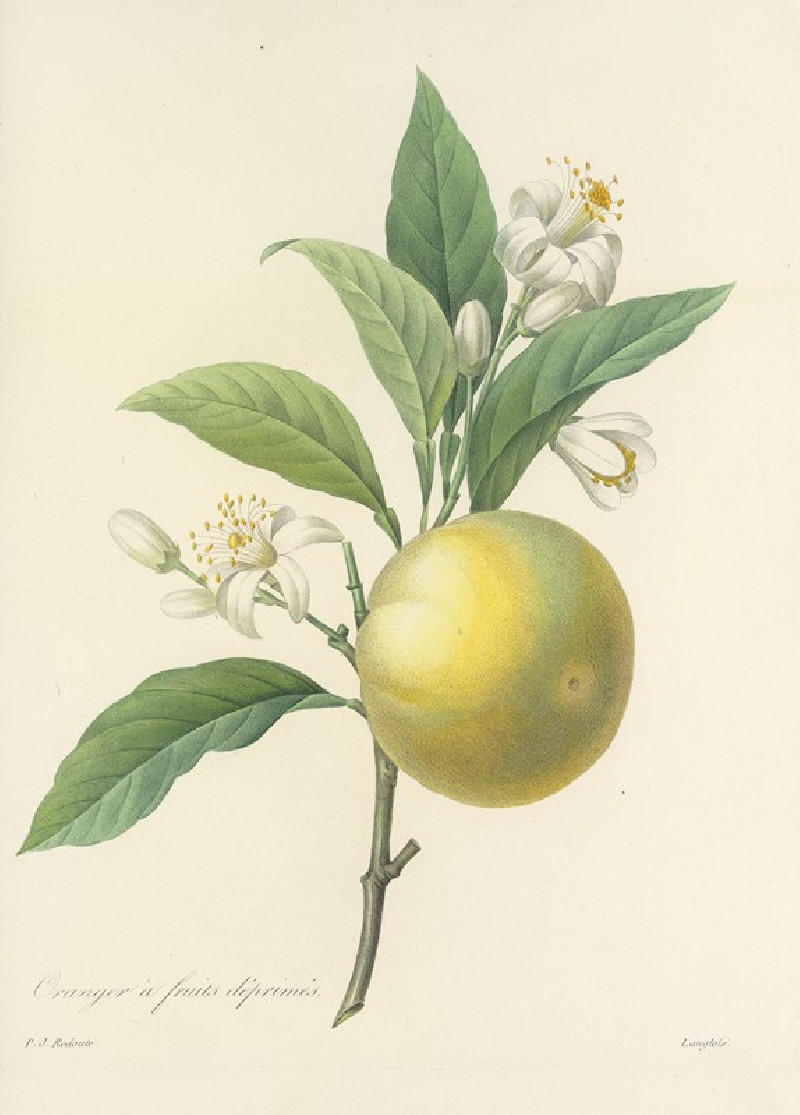Inlaid mahogany cylinder-fall china and book case, D-shaped satinwood drawing and writing table (1910 - 1911)
More about this artwork
Delivery
Reproductions are made to order and take 5 to 7 working days.
We send them out by courier and delivery takes another two working days.
If you need a reproduction sooner, please contact us - we can usually find a solution and produce it a little faster.
If you don't want to pay for postage, you can pick up your paintings at our galleries in Kaunas or Vilnius.
Returns
Yes, reproductions can be returned.
If you have any doubts more than 30 days after the date of purchase, please contact us - we will take the reproduction back for a refund or offer you a replacement!
We accept a maximum of two returns per customer - please note that we make reproductions to order, so please choose responsibly.
We do not refund shipping expenses.
Author and illustrator of The Book of Decorative Furniture, published in 2 volumes by T. C. & E. C. Jack in 1910-11, which featured one hundred reproductions in full colour and one thousand text illustrations. The book went through a number of editions.
Almost nothing has been published about Foley other than that he was a Fellow of the institute of designers.
He was born Edwin John Foley in Fisherton Anger, Wiltshire, c.1859, the second child and eldest son of furniture manufacturer Arthur Foley of the Fisherton Cabinet Works, Salisbury, and his wife Jane. He was at least partly educated in London, where he lived with his uncle and aunt, Peter and Rhoda Marie Brown.
He worked as a designer for his father from at least the early 1880s, but by 1891 was living in Charlotte Street, Marylebone, with his wife Louisa Maud (nee Hayford), whom he married in 1882. They had three children, Conrad Hayford (b. 1885), Hubert Edwin (b. 1887) and Alan Victor (b. 1888).
Edwin John Foley lived at 294 Camden Road, Middlesex, and died at Cottesloe, Western Australia, on 25 April 1912.
Many more pictures by Edwin Foley can be found at the Look and Learn picture library.

